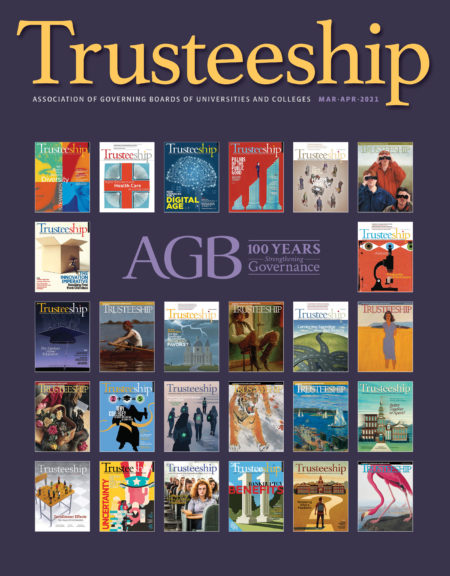
Paul N. Friga a clinical associate professor of strategy at the Kenan-Flagler Business School at the University of North Carolina at Chapel Hill. He also cofounded ABC Insights, a consortium of universities working to become more efficient and effective, which was acquired by HelioCampus this year. Friga will be leading the new practice area of AGB, the strategic transformation of public higher education.
How much has COVID-19 cost U.S. higher education institutions?
The financial impact of COVID-19 on U.S. higher education has been devastating. In a recently completed research study, I estimated the potential damage to be $183 billion over academic fiscal years 2020 and 2021. Due to decreased revenue of 14 percent on average per university (lower enrollments, lower tuitions, increased discounting, lower auxiliary revenues on campus, lower room and board, lower athletics, lower state and local funding, etc.) and increased expenses due to safety protocols of just over 25 percent of lost revenues, such as testing, increased technologies, and operational adjustments on campus.
Can you explain your research methodology?
Our research approach sought to go beyond surveys; we conducted an extensive review of publicly announced budget deficits and hits to revenue on a university-by-university basis. We focused on the top 400 U.S. News and World Report’s universities and the top 100 liberal arts colleges and found data for 107 of those institutions and analyzed and found averages and multiplied them times the macro spending in U.S. higher ed.
What strategies can colleges and universities take to mitigate costs or plan for the future in this difficult environment?
Not doing anything and hoping that this will blow over is the biggest mistake a university could make. The vast majority of institutions have made significant short- term changes that may have been unheard of in years past. Those changes include hiring freezes across the board, leadership pay cuts (especially leadership), furloughs, layoffs, frozen capital projects, and extreme control involving cost containment. That has helped mitigate the short-term resource losses, but it can put a university at risk without strategic reinvestment at the same time. The analogy is this: we’ve had trees that have gone overgrown with branches. So, the key is to avoid across-the-board cuts and strategically cut the right branches and simultaneously add more fertilizer and water and nutrients for the tree to grow healthier.
So, the more difficult changes that some institutions are making that more need to be addressing include streamlining administrative services to avoid redundancies in units within a campus and campuses within a system—particularly in areas such as IT, HR, and finance. Another critical area to investigate for systematic long-term change would be academic spend, both rightsizing faculty to match current levels of enrollment as well as examining faculty productivity for topics such as research output, teaching loads, and release time. The last piece to strategically handle COVID-19 but position your university for the long-term, is to invest in areas of growth, such as new research areas that are in high demand, new programs that are more attractive to students and employers, more online educational offerings in select areas, and highly productive faculty who can help universities deliver on their mission.
How can boards help navigate decisions regarding costs and their institutions’ financial model to ensure they remain financially viable and thrive in the future?
Boards are the most critical stakeholder group in the transformation of higher education. This is a time for leadership that is often inherent in the collective experiences of board members, but must be applied to help universities navigate uncharted territory. For example, new priorities have surfaced that are typically uncomfortable and difficult for some presidents and cabinets to address. In particular, boards should shift their priorities to strategic resource allocations that include significant cuts in unproductive areas and reinvestment in new areas and in highly productive people. Number two is they should consider major new initiatives such as mergers, affiliations, and even closures. Third, they should increase demands for accountability and assist the cabinet in setting strategic and financial dashboards with tangible goals for transformation.
Ask the Expert
The Urgency of Public Higher Education Transformation
March 23, 2021
Join Paul Friga, an expert in higher education strategy and the leader of AGB Consulting’s practice area: Strategic Transformation of Public Higher Education, for this interactive discussion and dialogue about how much the higher education sector has lost due to COVID, what institutions are doing to deal with budget deficits, and how to position themselves for long-term success. See www.agb.org/asktheexpert.

